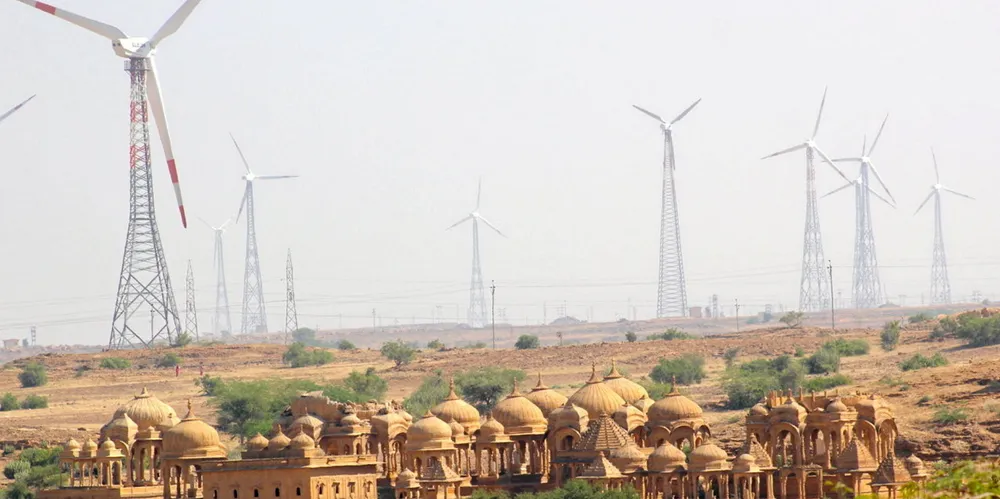India can challenge China and become global wind powerhouse, says GWEC
However weening the world off cheap Chinese imports won’t be easy and could slow down the rollout of wind energy

The Covid-19 pandemic, trade wars and the invasion of Ukraine have set the stage for India to challenge China’s supremacy in wind power manufacturing, according to a new report, but the country must overcome challenges to “seize” this opportunity.
China dominates the global supply chain for blade, generator and gearbox manufacturing but may be losing its footing, the Global Wind Energy Council (GWEC) and consultant MEC+ argued in their latest annual report on the Indian wind power sector.
India meanwhile, "with its strategic geopolitical position and scale," has already become a "prime destination for global players seeking to establish a manufacturing base," argues Sidharth Jain, founder and CEO of MEC+.
However, to emerge as one of the top two or three manufacturing destinations globally, he said that "enhancing the supply chain’s competitiveness is paramount."
According to the report, the lockdown in China during the Covid-19 pandemic prompted leading turbine OEMs like Vestas to recognise India as a “stopgap solution,” prompting an expansion of manufacturing facilities in the country.
The trade war that the administration of former US President Donald Trump launched against China in 2018 is also said to have “triggered a notable transition” in the wind gearbox supply chain from China to India.
More recently, Russia’s invasion of Ukraine has “amplified the critical need to reinforce security of supply” and reduce dependency on single, potentially hostile markets such as China, according to the report.
Many countries have already started pursuing “reshoring,” “de-risking” and “China plus One” policies as a result.
India is in a “favourable position to expand” global exports as it already has a strong foothold in the wind sector, the report said. The country currently provides on average 10% of the global manufacturing capacity for turbine blades, generators and gearboxes.
“Challenges must be overcome to seize these opportunities,” GWEC warned. India must first build a “strong and sustainable domestic market”, align its manufacturing output with global needs, and make export incentives more accessible.
Critically, the report noted that Indian turbines are currently 30-60% more expensive than their Chinese counterparts – putting this down to differences in the cost of raw materials and access to components.
Weening the world off the Chinese supply chain will take “considerable time” and could create “bottlenecks” that slow down the deployment of wind turbines, the report said. It could also reduce the price competitiveness of wind power compared to conventional fuels.
If the US and Europe prioritise “Made in the USA” or “Made in Europe” initiatives, they could face “chronic production shortages” of nacelles for turbines in just three years, GWEC reckoned. China, India and Latin America will have enough supply to meet demand through 2030.
GWEC India chair Sumant Sinha said that, with an "extremely conducive policy environment under the current government" and a "fairly advanced manufacturing supply chain," India is "uniquely positioned to play an important role in helping the world meet its ambitious 2030 targets."
Domestically, the report predicted that India will add around 22GW of wind energy capacity will in the next five years – although that could rise to 26GW if the state and private sectors up demand.
(Copyright)